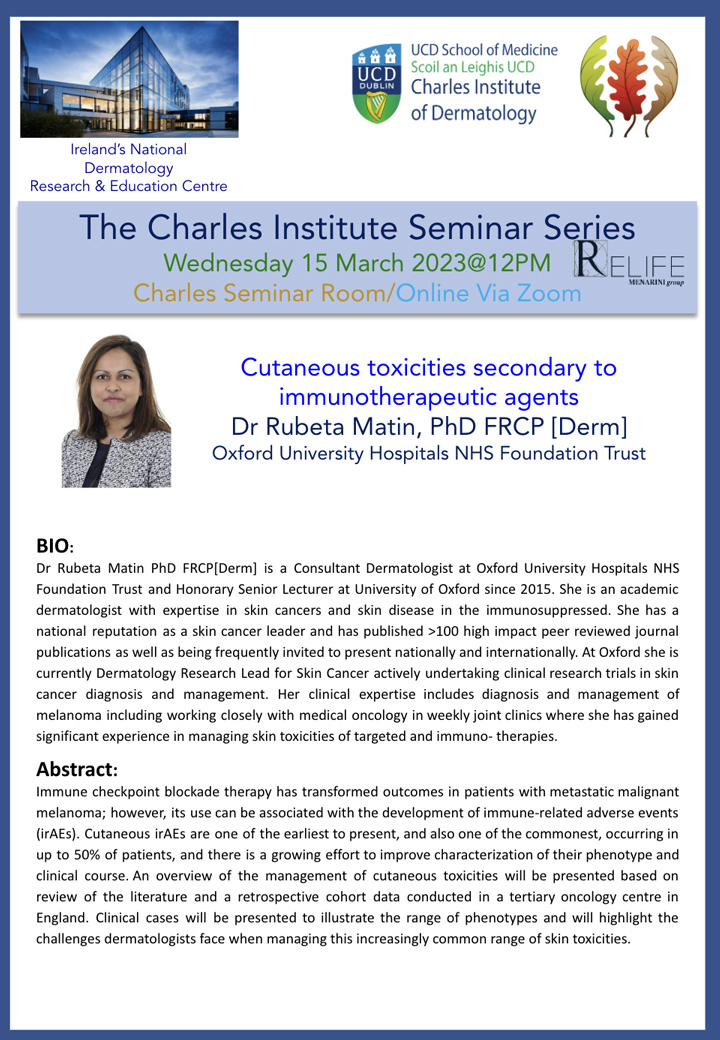Charles Institute Seminar Series 2022-23: Cutaneous toxicities secondary to immunotherapeutic agents with Guest Speaker Dr Rubeta Matin
Date of Talk: Wednesday 15 March 2023@12PM
Location: Charles Seminar Room / Online Via Zoom
Talk Title: Cutaneous toxicities secondary to immunotherapeutic agents
Speaker Details: Dr Rubeta Matin, PhD FRCP [Derm]
Oxford University Hospitals NHS Foundation Trust
Short Biography: Dr Rubeta Matin PhD FRCP[Derm] is a Consultant Dermatologist at Oxford University Hospitals NHS Foundation Trust and Honorary Senior Lecturer at University of Oxford since 2015. She is an academic dermatologist with expertise in skin cancers and skin disease in the immunosuppressed. She has a national reputation as a skin cancer leader and has published >100 high impact peer reviewed journal publications as well as being frequently invited to present nationally and internationally. At Oxford she is currently Dermatology Research Lead for Skin Cancer actively undertaking clinical research trials in skin cancer diagnosis and management. Her clinical expertise includes diagnosis and management of melanoma including working closely with medical oncology in weekly joint clinics where she has gained significant experience in managing skin toxicities of targeted and immuno- therapies.
Abstract for talk: Immune checkpoint blockade therapy has transformed outcomes in patients with metastatic malignant melanoma; however, its use can be associated with the development of immune‐related adverse events (irAEs). Cutaneous irAEs are one of the earliest to present, and also one of the commonest, occurring in up to 50% of patients, and there is a growing effort to improve characterization of their phenotype and clinical course.
An overview of the management of cutaneous toxicities will be presented based on review of the literature and a retrospective cohort data conducted in a tertiary oncology centre in England. Clinical cases will be presented to illustrate the range of phenotypes and will highlight the challenges dermatologists face when managing this increasingly common range of skin toxicities.
